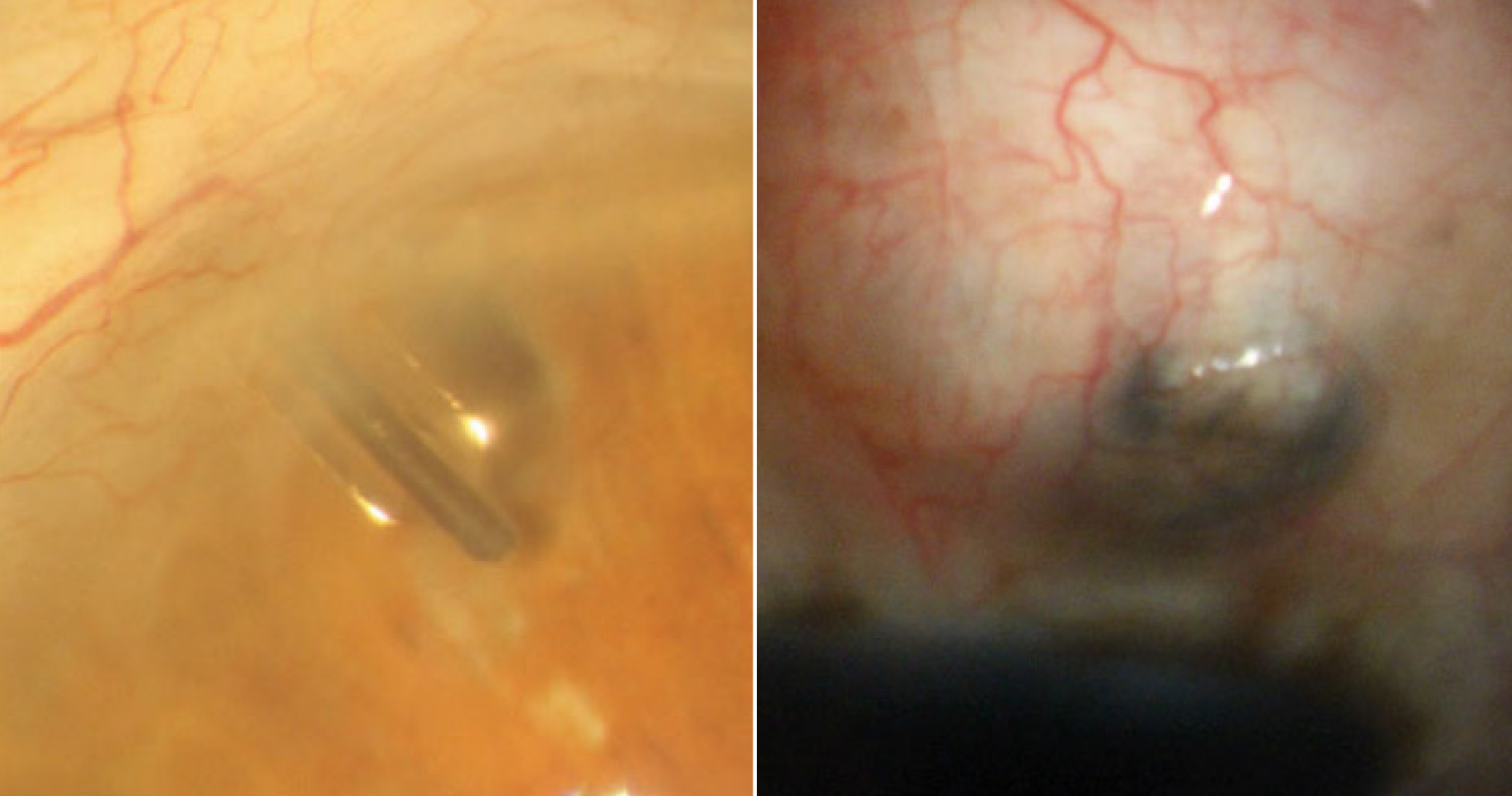 |
Tube shunt implantation and trabeculectomy are both viable options for surgical treatment of glaucoma. Photo: Justin Schweitzer, OD. Click image to enlarge. |
The number of procedures available to treat glaucoma patients by reducing IOP has increased exponentially over recent years with the advent of minimally invasive techniques and the rising stature of SLT as a first-line therapy. Still, trabeculectomy and tube shunt surgery remain the two big guns available when patients cannot establish IOP control through simpler means. Although the treatments are largely effective overall, there are many different approaches to performing these surgeries, which don’t all result in the same clinical outcome.
To gain more insight into the performance of various types of glaucoma surgeries, a team of researchers conducted a multicenter randomized clinical trial called the Primary Tube Versus Trabeculectomy Study to compare the safety and efficacy of two common procedures—trabeculectomy with mitomycin C and tube shunt implantation. They recently published five-year follow-up data in Ophthalmology showing that the treatment outcomes and surgical failure rates were similar in each group.1
There were 242 eyes of 242 patients seen across 16 clinics included in the study, 117 treated via trabeculectomy and 125 treated via tube shunt. The researchers reported, “The cumulative probability of failure after five years of follow-up was 42% in the tube group and 35% in the trabeculectomy group,” with a hazard ratio of 1.3. Five years postoperatively, IOP was also not significantly different between groups at 13.4mm Hg in the tube group and 13mm Hg in the trabeculectomy group.
One outcome measure where trabeculectomy patients seemed to outperform patients in the tube group was the number of glaucoma medications required at five years post-op. Patients in the tube group still took about two medications on average, while in the trabeculectomy group, that value was closer to one (2.2 vs. 1.3, respectively). Largely for this reason, the researchers concluded, “Although the overall rate of success was similar between the two treatment groups, the rate of complete success was higher in the trabeculectomy group than the tube group. These findings suggest that trabeculectomy with mitomycin C is the preferred initial surgical procedure in patients who are non-adherent or poorly tolerant of glaucoma medical therapy,” they noted.
The researchers also published another paper in Ophthalmology specifically evaluating data on the postoperative complications of patients who participated in the study. There, they reported that the incidence of early postoperative complications was higher following trabeculectomy with mitomycin C (19%) than tube shunt surgery (34%), though these did not increase risk of treatment failure, vision loss or cataract progression. After five years of follow-up, similar rates of late postoperative complications, serious complications and cataract progression were detected with both surgical procedures.2
While treatment outcomes didn’t significantly differ between patients receiving trabeculectomy with mitomycin C or tube shunt surgery, there may sometimes still be reasons to pick one procedure over another. “With the expansion of surgical options for managing glaucoma, selecting the most appropriate glaucoma operation involves balancing the risk of complications and the benefit of IOP reduction for an individual patient,” the research team wrote.
1. Gedde SJ, Feuer WJ, Lim KS, et al. Treatment outcomes in the Primary Tube Versus Trabeculectomy (PTVT) Study after 5 years of follow-up. Ophthalmology. July 5, 2022. [Epub ahead of print]. 2. Gedde SJ, Feuer WJ, Lim KS, et al. Postoperative complications in the Primary Tube Versus Trabeculectomy (PTVT) Study during 5 years of follow-up. Ophthalmology. July 5, 2022. [Epub ahead of print]. |

